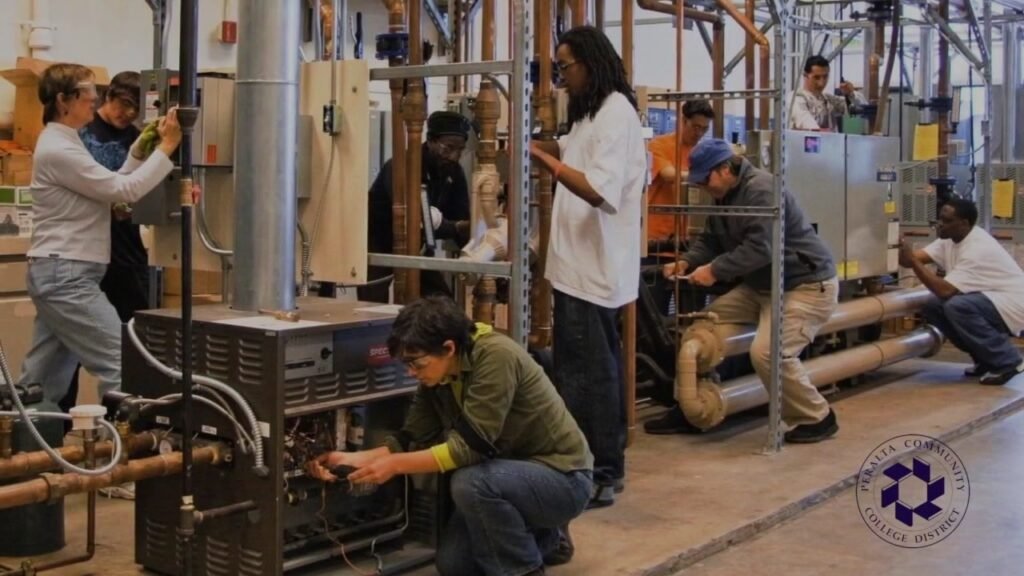H1: Understanding Environmental Control Technology and Its Impact
In recent years, environmental control technology has become a central element in mitigating environmental degradation, improving air quality, and reducing carbon footprints. This emerging field encompasses a variety of methods, tools, and systems designed to manage the interaction between human activities and the environment. From industrial applications to residential settings, environmental control technologies are deployed to ensure that the planet remains habitable while enhancing the quality of life for future generations.
This article will explore the various dimensions of environmental control technology, its impact on industries, and how it contributes to a more sustainable future. Whether you are curious about air pollution control systems or intrigued by the integration of HVAC technology, this guide covers it all. We will also explore innovations like intelligent grid systems and discuss their role in driving energy efficiency.
What Is Environmental Control Technology?
Environmental control technology refers to a broad range of systems and techniques used to monitor, regulate, and reduce the impact of human activities on the environment. These technologies are applied in various fields, including air pollution control, water treatment, waste management, energy efficiency, and building systems such as HVAC (Heating, Ventilation, and Air Conditioning). Their primary aim is to protect the environment while ensuring optimal living conditions for people.
Air Quality Management
Air quality management is one of the most critical aspects of environmental control technology. Air pollution is a significant ecological issue affecting public health and the ecosystem. Technologies like electrostatic precipitators, scrubbers, and catalytic converters are used in industrial settings to control emissions and reduce the release of harmful pollutants like sulfur dioxide (SO2) and nitrogen oxides (NOx). These systems are often integrated into manufacturing plants, power stations, and vehicles to meet regulatory standards and minimize pollution.
Furthermore, intelligent air quality monitoring devices are becoming more popular in urban areas. These systems use real-time data to monitor pollutants and provide actionable insights on how to improve air quality. With the advent of the Internet of Things (IoT), cities are implementing sensors that detect air contaminants and offer real-time updates, allowing authorities to take preventive action.
Water Treatment and Waste Management
Environmental control technology also addresses water pollution and waste management. Advanced water treatment technologies such as reverse osmosis, desalination, and ultraviolet (UV) disinfection are widely used to treat wastewater and supply clean drinking water. These technologies help purify water and ensure its efficient use, thereby conserving precious resources.
Waste management technologies are another essential facet. From recycling programs to landfill gas recovery systems, waste management solutions aim to minimize the amount of waste generated by industries and households. Incineration plants that use energy recovery processes contribute to reducing landfill use while generating electricity.
Innovations in Environmental Control Technology
Green Energy Solutions
The development of green energy solutions is closely linked with environmental control technologies. Renewable energy systems such as solar panels, wind turbines, and geothermal heat pumps are becoming increasingly common in residential and commercial settings. These technologies are designed to reduce reliance on fossil fuels, minimize emissions, and contribute to a cleaner energy grid.
Innovative grid technology is a modern innovation that optimizes energy consumption and production. By integrating advanced metering systems and sensors, smart grids allow utilities to manage energy flow more efficiently, ensuring that excess power from renewable sources can be stored or redistributed. This promotes the use of renewable energy and helps balance energy demand and supply.
HVAC Systems and Building Automation
HVAC systems are critical in environmental control technology, especially in large-scale commercial and industrial buildings. These systems ensure that buildings maintain optimal indoor air quality and temperature while minimizing energy consumption. Modern HVAC systems are equipped with advanced sensors that adjust airflow and temperature according to a room’s occupancy, leading to significant energy savings.
Building automation systems (BAS) take environmental control to the next level by allowing centralized control over various building functions, including lighting, heating, cooling, and security systems. Such automation ensures energy efficiency and a reduction in the building’s overall carbon footprint.
Pollution Control in Industry
Controlling pollution has become a regulatory necessity in the industrial sector. Innovations in pollution control technology have provided industries with effective tools to minimize harmful emissions. Technologies like flue gas desulfurization, selective catalytic reduction (SCR), and carbon capture and storage (CCS) are increasingly adopted by industries such as power generation, steel production, and cement manufacturing.
Flue gas desulfurization, for instance, helps reduce SO2 emissions from coal-fired power plants. Carbon capture and storage, another revolutionary innovation, captures carbon dioxide produced from industrial processes and stores it underground, preventing it from entering the atmosphere.
The Role of Environmental Control Technology in Sustainability
The global push for sustainability has positioned environmental control technology as a critical enabler of the green transition. Environmental technologies provide viable solutions as governments and organizations worldwide aim to reduce greenhouse gas emissions and achieve net-zero goals.
Sustainable building practices, for example, integrate energy-efficient technologies such as low-energy lighting, thermal insulation, and water-saving systems. These technologies reduce energy consumption and waste while ensuring environmental comfort and economic savings.
Furthermore, environmental monitoring technologies are used in agriculture, mining, and construction industries to reduce their environmental impact. Sensors that detect soil moisture levels can optimize water usage in agriculture, while real-time data analytics provide industries with insights into their ecological performance.
Challenges and Future Prospects
While environmental control technologies have made significant strides, challenges remain. The high upfront cost of implementing these systems is an important hurdle, especially for small businesses. Additionally, industries in developing countries may face difficulties in adopting such technologies due to a lack of technical expertise and financial resources.
However, with continued research and development, environmental control technologies will likely become more affordable and accessible. Innovations like artificial intelligence (AI) and machine learning are also expected to improve the efficiency of these systems, making them more adaptive and responsive to changing environmental conditions.
Final Thoughts
Environmental control technology is an evolving field with immense potential to shape a more sustainable future. From air quality management to green energy solutions, these technologies address some of the most pressing environmental challenges we face today. As regulatory pressures increase and public awareness grows, the demand for innovative ecological solutions will continue to rise.
The successful adoption of environmental control technologies will depend on collaboration between governments, industries, and communities. We can create a healthier planet for future generations by fostering innovation and investing in sustainable technologies.
Questions and Answers
- What are the critical components of environmental control technology?
- Environmental control technology comprises air and water pollution control, waste management, energy efficiency solutions, and systems like HVAC that maintain ecological quality.
- How does HVAC technology contribute to environmental sustainability?
- Modern HVAC systems improve energy efficiency by adjusting airflow and temperature based on occupancy, reducing energy consumption and minimizing emissions.
- What is the role of green energy in environmental control technology?
- Green energy solutions, including solar, wind, and geothermal systems, reduce fossil fuel dependence and promote clean, renewable energy sources.
- What are some challenges associated with adopting environmental control technologies?
- High costs and the lack of technical expertise can hinder the adoption of these technologies, particularly in small businesses and developing nations.
Sources:
- Environmental Science & Technology
- Renewable Energy & Green Tech


